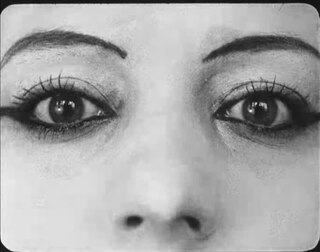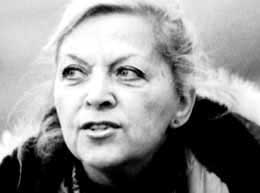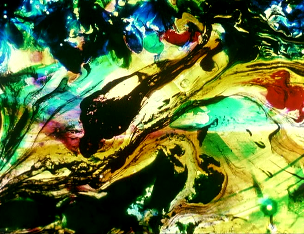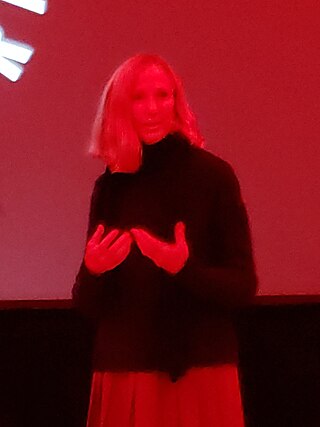Related Research Articles

Dog Star Man is a series of short experimental films, all directed by Stan Brakhage, featuring Jane Wodening. It was released in instalments between 1961 and 1964 and comprises a prelude and four parts. In 1992, Dog Star Man was included in its entirety in the annual selection of 25 motion pictures added to the National Film Registry of the Library of Congress. being deemed "culturally, historically, or aesthetically significant" and recommended for preservation.

James Stanley Brakhage was an American filmmaker. He is considered to be one of the most important figures in 20th-century experimental film.

Drawn-on-film animation, also known as direct animation or animation without camera, is an animation technique where footage is produced by creating the images directly on film stock, as opposed to any other form of animation where the images or objects are photographed frame by frame with an animation camera.

Experimental film or avant-garde cinema is a mode of filmmaking that rigorously re-evaluates cinematic conventions and explores non-narrative forms or alternatives to traditional narratives or methods of working. Many experimental films, particularly early ones, relate to arts in other disciplines: painting, dance, literature and poetry, or arise from research and development of new technical resources.

Window Water Baby Moving is an experimental short film by Stan Brakhage, filmed in November 1958 and released in 1959. The film documents the birth of the director's first child, Myrrena, by his then-wife Jane Brakhage, now Jane Wodening.

Marie Menken was an American experimental filmmaker, painter, and socialite. She was noted for her unique filming style that incorporated collage. She was one of the first New York filmmakers to use a hand-held camera and trained Andy Warhol on its use. Her film Glimpse of the Garden was selected for preservation in the National Film Registry by the Library of Congress.

Mothlight is an experimental short film by Stan Brakhage, released in 1963. The film was created without the use of a camera.

Storm de Hirsch (1912–2000) was an American poet and filmmaker. She was a key figure in the New York avant-garde film scene of the 1960s, and one of the founding members of the Film-Makers' Cooperative. Although often overlooked by historians, in recent years she has been recognized as a pioneer of underground cinema.
Philip Stewart Solomon was an American experimental filmmaker noted for his work with both film and video. In recent years, Solomon had earned acclaim for a series of films that incorporate machinima made using games from the Grand Theft Auto series. His films are often described as haunting and lyrical.
Over the course of more than five decades, the American experimental filmmaker Stan Brakhage produced a large body of work. All films in the filmography are assumed to be silent, in color, and are meant to be shown at 24 frames per second, unless otherwise noted. The Brakhage films, comprising his edited originals, intermediate elements, and other original material, are housed at the Academy of Motion Picture Arts and Sciences Film Archive, where a long-term project is underway to preserve and restore his entire film output.
Scenes from Under Childhood is a series of 16mm film in four independent sections by the American experimental filmmaker Stan Brakhage produced between 1967 and 1970. All four sections are silent, though Brakhage made a version with sound available for the first section.
Eye Myth is an experimental short film by Stan Brakhage, produced in 1967. The film has a running time of only nine seconds, but took about a year to produce.
Cat's Cradle is an experimental short film by Stan Brakhage, produced in 1959. The film was described by Brakhage as "sexual witchcraft involving two couples and a 'medium' cat."

The Dante Quartet is an experimental short film by Stan Brakhage, completed in 1987. The film was inspired by Dante's Divine Comedy, and took six years to produce.
The Film-Makers' Cooperative is an artist-run, non-profit organization founded in 1961 in New York City by Jonas Mekas, Andy Warhol, Shirley Clarke, Stan Brakhage, Jack Smith, Lionel Rogosin, Gregory Markopoulos, Lloyd Michael Williams, and other filmmakers, for the distribution, education, and exhibition of avant-garde films and alternative media.
American artist Joseph Cornell (1903–1972) is justifiably best known for his boxes which constitute a singular contribution to the Surrealist canon and to the art of assemblage. However, he also pursued experimental film-making as an amateur beginning in the 1930s. Cornell was the principal pioneer of collage films in a purely artistic sense and, although the introduction of his films into the public forum was relatively late compared to when they were made, his work as a filmmaker has been widely influential.

Janie Geiser is an American artist and experimental filmmaker. Her notable works include The Fourth Watch, Terrace 49, The Red Book, The Secret Story, Colors, Immer Zu, Lost Motion, and Clouded Sulphur.

Mary Jane Wodening was an American artist and writer. She is best known for her collaborations with experimental filmmaker Stan Brakhage, to whom she was married from 1957 until 1987. During this period, she was known as Jane Brakhage. Wodening featured in Brakhage's short film Window Water Baby Moving, in which her husband filmed her giving birth.
Unglassed Windows Cast a Terrible Reflection is a 1953 American short film directed by Stan Brakhage. Shot while in Brakhage's native Denver, the film stars Larry Jordan who later went on to become a film director. Filming was done in Nevadaville, Colorado. Like his other films at the time, it was shot on 16mm film, is black and white and features no dialogue.
The Way to Shadow Garden is a 1955 American experimental film directed by Stan Brakhage.
References
- 1 2 Brakhage Scrapbook: Stan Brakhage Collected Writings 1964-1980, edited by Robert A. Haller (1982) New York: Documentext, p245
- 1 2 3 Daniel Barnett (2008) Movement as meaning: in experimental film, Rodopi, page iii-iv
- 1 2 James, David E. (2005) Stan Brakhage: Filmmaker, Temple University Press, p43
- ↑ The Sound Cinema of Stan Brakhage, Los Angeles Film Forum, June 2010. Accessed March 10, 2011.
- ↑ MacDonald, Scott (2005) A critical cinema: interviews with independent filmmakers, University of California Press, p205
- ↑ "Stan Brakhage Collection". Academy Film Archive.
- ↑ "Preserved Projects". Academy Film Archive.